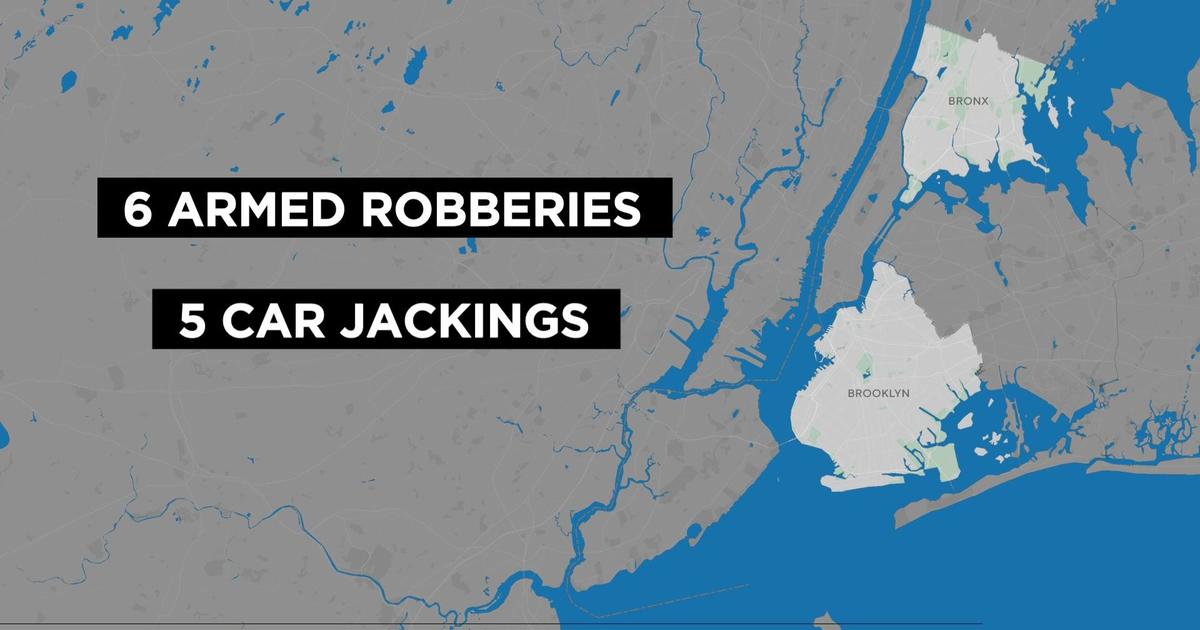Coronavirus Pandemic Highlights Health Care Disparities; Task Force's Mission Is To Identify The Causes
NEW YORK (CBSNewYork) - The coronavirus has highlighted health care disparities in New York City and across the country.
Now, Mount Sinai doctors and scientists are going into the hardest hit communities to identify the conditions that lead to so many deaths.
CBS2's Aundrea Cline-Thomas explains.
Tyeasha Lester-Schrouder has been advocating for more resources to protect her already devastated Bronx community.
"Let's see if we can get some more masks, some more gloves, some more hand sanitizer," she said.
CORONAVIRUS PANDEMIC
- Resources, Hotlines, Unemployment & Covering Bills
- Remote Learning Tools For Parents Teaching At Home
- Ask Dr. Max Your Health Questions
- How Make Your Own DIY Face Mask
- How To Safely Remove Disposable Gloves
- Tips For Parents To Help Kids Cope
- Chopper 2 Over Empty NYC Streets, Landmarks
- Complete Coronavirus Coverage
Whether it's supplies or food, she turns to her pastor Jay Gooding to call local leaders for help.
"It's a shame, really, that the difference in the community makes such a difference in your health concerns. One of the things I think that's leading even people to being depressed is that not being able to have the health facilities and the resources that they need in this time," he said.
The Bronx has the highest rate of cases, hospitalizations and deaths from the coronavirus. In the Highbridge/Concourse section, nearly one in four tests are positive.
"People don't choose to get sick and die, this is not a choice. This is a system that's causing these problems," said Dr. Carol Horowitz of Mount Sinai Health System.
Dr. Horowitz is leading research into those systems that create health disparities, especially in Black, Latino, immigrant and LGBTQ communities hardest hit by COVID-19 as part of the newly created Institute for Health Equity Research at Mount Sinai.
"What is the interaction between poverty, the fact that you have diabetes, the fact that there's pollution in your neighborhood, and the fact that you don't have as good access to Wi-Fi so you're not getting telehealth," Dr. Horowitz said.
CORONAVIRUS: NY Health Dept. | NY Call 1-(888)-364-3065 | NYC Health Dept. | NYC Call 311, Text COVID to 692692 | NJ COVID-19 Info Hub | NJ Call 1-(800)-222-1222 or 211, Text NJCOVID to 898211 | CT Health Dept. | CT Call 211 | Centers for Disease Control and Prevention
Those are barriers that stand in the way of getting the most basic needs, like fresh fruits and vegetables.
"You have to go to supermarkets outside of your community," Lester-Schrouder said.
"How far away is that?" asked CBS2's Aundrea Cline-Thomas.
"If you're driving, it's maybe three to four miles. If not, public transportation, two buses or a cab," Lester-Schrouder said.
In East Harlem, the line for healthy food from the New York Common Pantry spanned an entire city block.
"We've seen our intake numbers grow 50-60%. So it's people who have never come to our doors before," said Judy Secon of New York Common Pantry.
PHOTOS: New York City Enters Phase 2 Reopening
The pantry is among the 100 community organizations that are contributing to Mount Sinai's research. Politicians, advocates and business leaders - including basketball legend Magic Johnson - are on a task force to come up with solutions.
"Our institute is really designed to get different results and to look for changes that are really long overdue to happen," Dr. Horowitz said.
Change, not charity, could be the difference between life and death for many.
"All you can do is pray and hope for a better tomorrow," Lester-Schrouder said.
Focusing on equity from the doctor's office to the community.
Researchers will also use the data to help project the lingering impact COVID-19 has on communities and to help organizations prepare for the increased demands.



